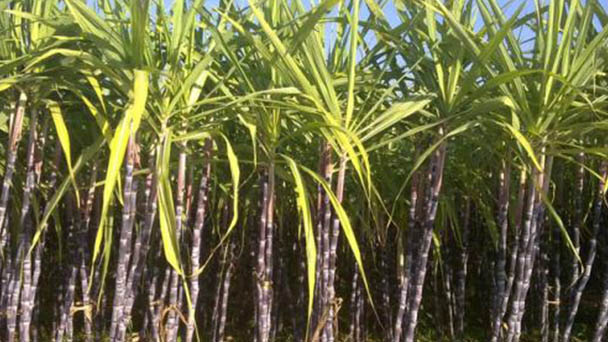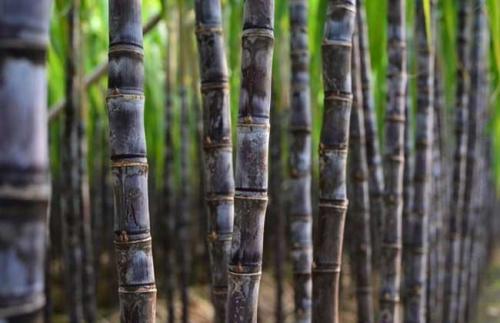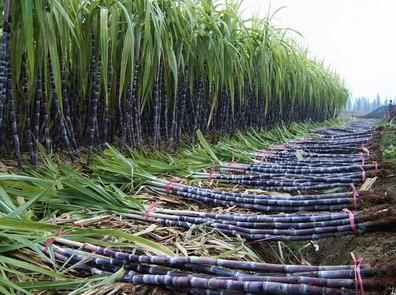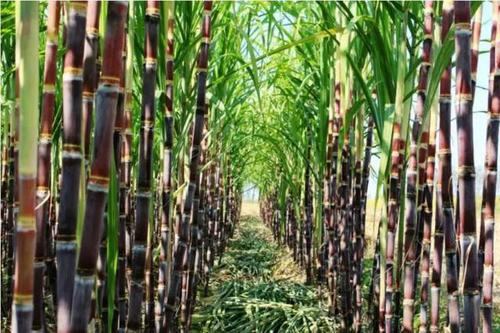Saccharum Officinarum profile
Written by Maggie
Nov 23 2020

Saccharum Officinarum is produced in more than one hundred countries around the world. The largest producers of Saccharum Officinarum are Brazil, India and China. Saccharum Officinarum is rich in sugar, water, and various vitamins, fats, proteins, organic acids, calcium, iron and other substances that are very beneficial to human metabolism. It is mainly used for sugar production and is now widely grown in tropical and subtropical areas.
Saccharum Officinarum picture

Saccharum Officinarum morphological characteristics
Saccharum Officinarum rhizome stout and well developed.Culms are 3-5 (-6) m high.2-4 (-5) cm in diam., with 20-40 nodes, lower internodes shorter and coarser, powdery. Leaf sheaths are longer than internodes, glabrous except at the mouth. Leaf tongue is very short, ciliate, leaf blade 1 m long, 4-6 cm wide, glabrous, midrib stout, white, margin serrate coarsely. Panicles are large, about 50 cm long, spindles glabrous except for nodes, parts below inflorescence not filiform pilose. Racemes have many whorls. Racemes internodes and spikelets are glabrous. Spikelet is linear-oblong, 3.5-4 mm long. Basal disks filiform pilose longer than 2 to 3 times spikelet. First glume interstitium is without veins, not pilose, apical, margin membranous. Second glume is with 3 veins, middle veins ridged, coarse, glabrous or ciliated. The first lemma is membranous, subequal to glumes, glabrous. The second lemma is minute, awnless or degenerate. The second palea is lanceolate. Scales are glabrous.
Saccharum Officinarum growth habit
Saccharum Officinarum is a temperature-loving and light-loving crop, with annual cumulative temperature of 5500℃ ~ 8500℃, frost-free period of over 330 days, annual air humidity of 60 {bf}, annual precipitation of 800 ~ 1200mm, and sunshine hours of over 1195 hours.Saccharum Officinarum has a wide range of adaptability to soil. Clay loam, loam and sandy loam are better. The pH value of the soil was 4.5 ~ 8.0, and sugarcane could grow, but the pH value of the soil was 6.5 ~ 7.5.
Saccharum Officinarum distribution area
Saccharum Officinarum is native to India and is now widely grown in tropical and subtropical areas. Saccharum Officinarum has the largest planting area in Brazil, followed by India, and China ranks the third. Other countries with large planting areas include Cuba, Thailand, Mexico, Australia and the United States.
Domestic distribution: Saccharum Officinarum district is mainly distributed in Guangxi (with output of 60 {bf}), Guangdong, Taiwan, Fujian, Sichuan, Yunnan, Jiangxi, Guizhou, Hunan, Zhejiang, Hubei and other provinces (autonomous regions).

Saccharum Officinarum breeding method
Planting Saccharum Officinarum in the field does not start from the seed. Generally, Saccharum Officinarum seedlings are planted directly.There are many sources of Saccharum Officinarum seedlings, the most important being the stem of Saccharum Officinarum. Because Saccharum Officinarum nodes grow buds, the method was to take the whole stem of Saccharum Officinarum, cut it into two-bud seedlings in sections, and then plant them flat or obtuse. In order to save labor, the whole plant has also been used recently. In the early days, when labor is abundant, two or three shoots are adopted on the top of the stems of the raw material to be harvested. This method, to cooperate with the construction period, can only be used for spring planting or a paste Aberdeen. Other tillering cut away from seedlings and a variety of side shoots, etc. In addition, the method of permanent root can be adopted, that is, when the raw material Saccharum Officinarum is harvested, the head of Saccharum Officinarum is not dug, and after harvesting, the head is cut, the root is opened, the soil is removed and fertilized.
Nutritional value of Saccharum Officinarum
Modern medical research shows that Saccharum Officinarum is rich in sugar, water, in addition, it also contains various vitamins, fats, proteins, organic acids, calcium, iron and other substances that are very beneficial to human metabolism.Saccharum Officinarum not only sweetens foods, but also provides the nutrients and calories you need.Contain protein, fat, carbohydrate, calcium, phosphorus, iron, asparagine, aspartic acid, glutamic acid, serine, alanine, valine, leucine, is the amino acid, lysine, butyl hydroxy amino acid, glutamine, proline, tyrosine, cystine, phenylalanine, gamma-aminobutyric acid and so on the many kinds of amino acid, fumaric acid, succinic acid, glycolic acid, malic acid, citric acid, oxalic acid and organic acid and vitamin B1, B2, B6, C.The juiced Saccharum Officinarum residue contained polysaccharides that had an inhibitory effect on cancer and sarcoma 180 in mice.
Therapeutic effects of Saccharum Officinarum
General people can eat, spleen and stomach cold, stomach cold pain should not eat. Saccharum Officinarum is a good food and therapy that can be clear, moist and refreshing.

Latest Updated
- Benefits of Bugleweed - 7 Science-backed Health Benefits
- Bugleweed Dangers & Side Effects - Is It Poisonous?
- How to Plant Evergreen Trees - What You Should Know
- When to Plant Evergreens - Grow Guide for Evergreen Trees
- 12 Wonderful Evergreen Shrubs for Your Garden
- 12 Popular Evergreen Plants with Pictures for Beginners
- When And How To Prune A Lilac Bush Like a Pro
- How to Grow & Care for Lilac Vine (Hardenbergia Violacea)
- Japanese Lilac Tree (Syringa Reticulata) Care & Propagation Guide
- Shumard Oak Pros and Cons - What to Know
Popular Articles
- Winter maintenance of Antirrhinum Majus
- How to Grow Terminalia Mantaly Tree
- How to Grow and Care for Crossostephium Chinense
- How to grow Antirrhinum Majus in spring
- Peristeria Elata (Dove Orchid) Profile: Info & Care Guide
- Underwatered Snake Plant (Sansevieria Trifasciata) - Signs And How To Fix
- How to Care for Brazilian Jasmine Plant (Mandevilla Sanderi)
- How to Grow & Care for Graptopetalum Purple Delight in Summer
- Rosa Chinensis (China Rose): Plant Growing & Care Tips
- How to Care for Baby Sun Rose (Aptenia Cordifolia)